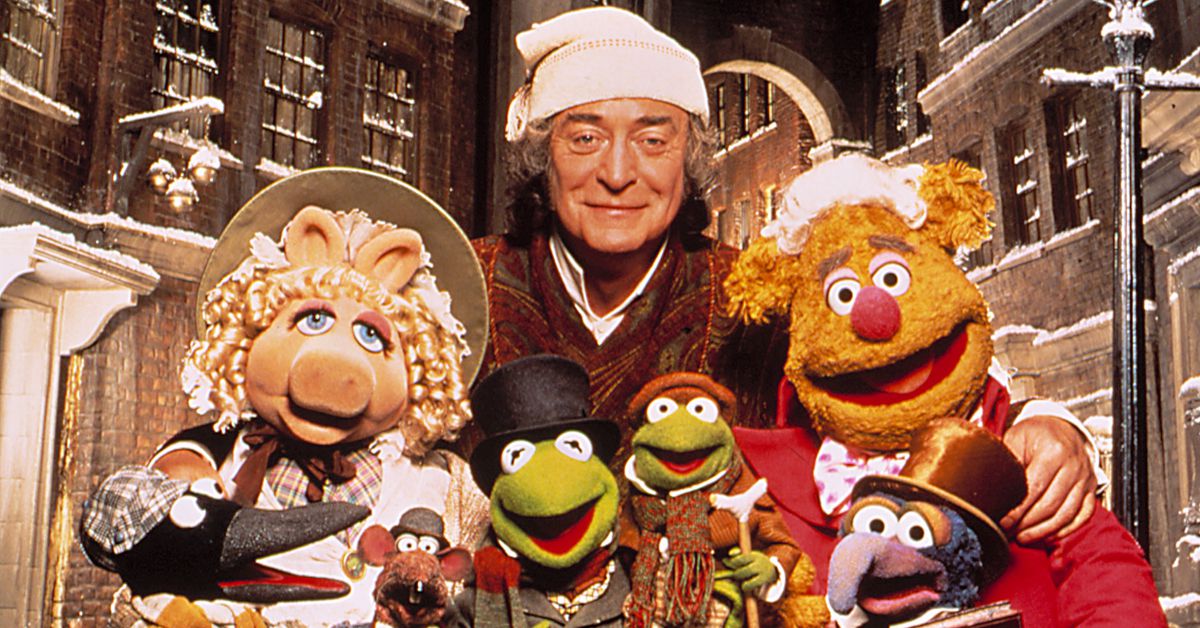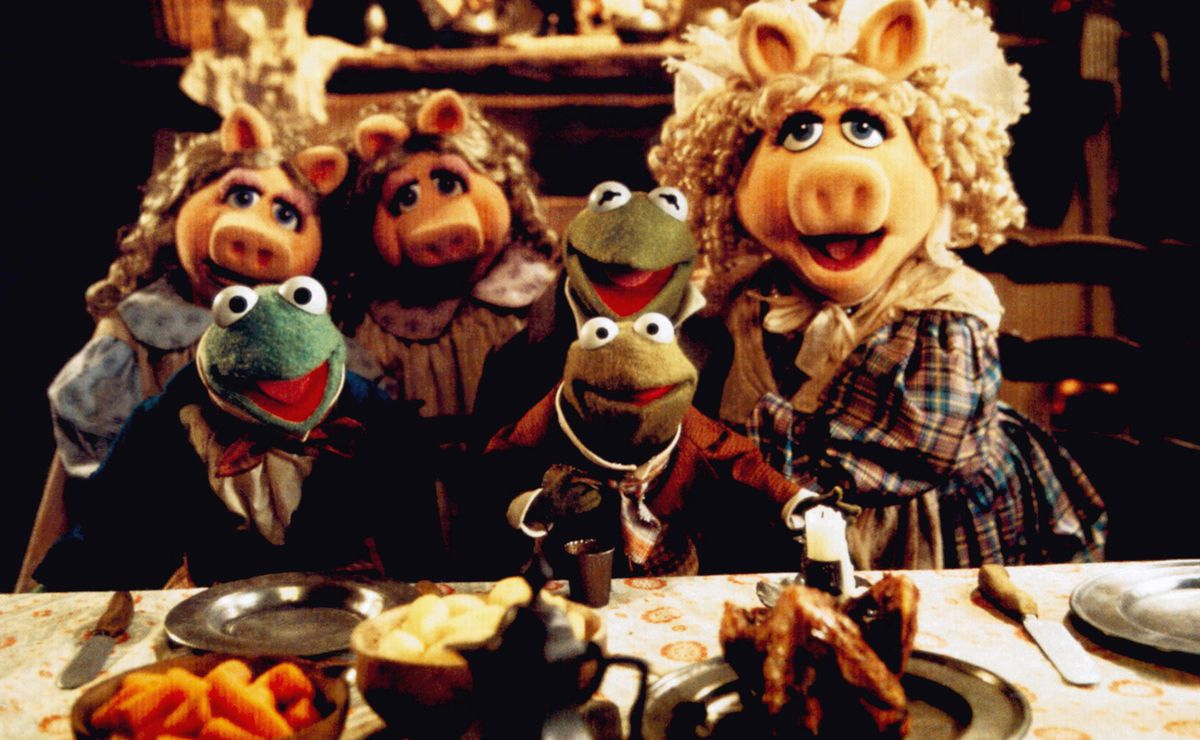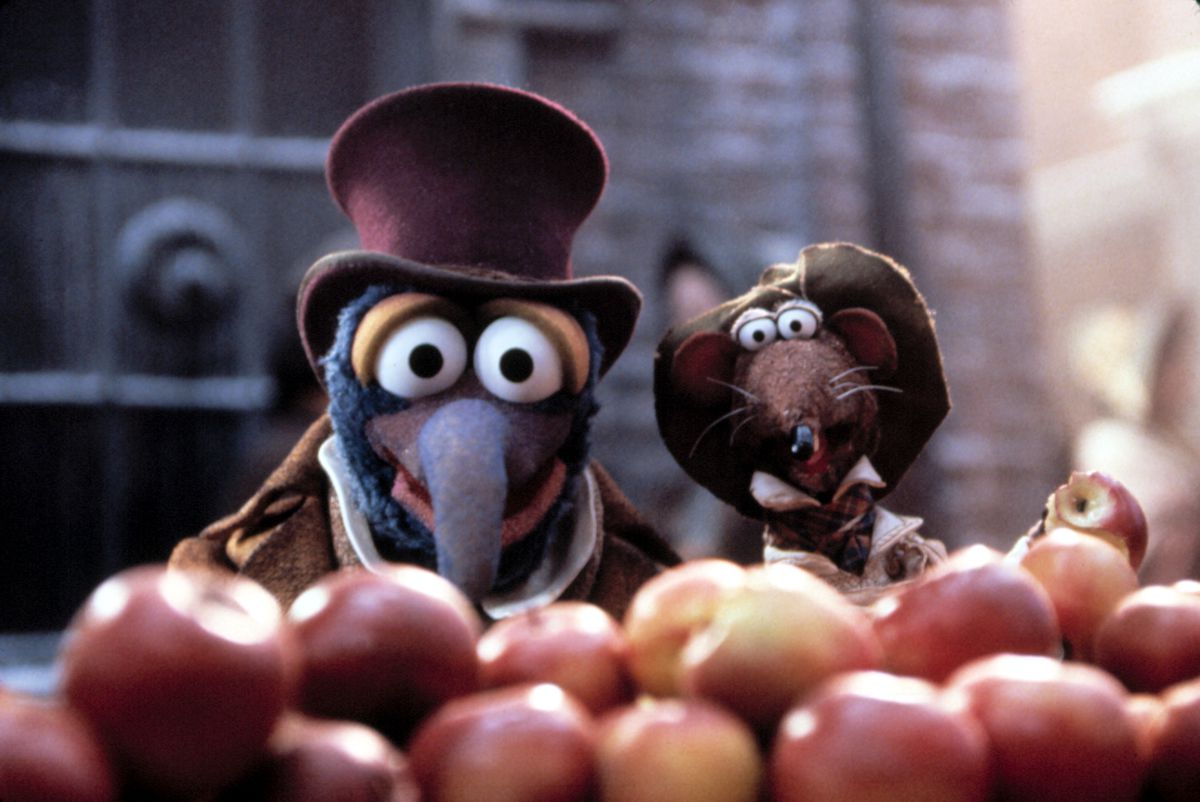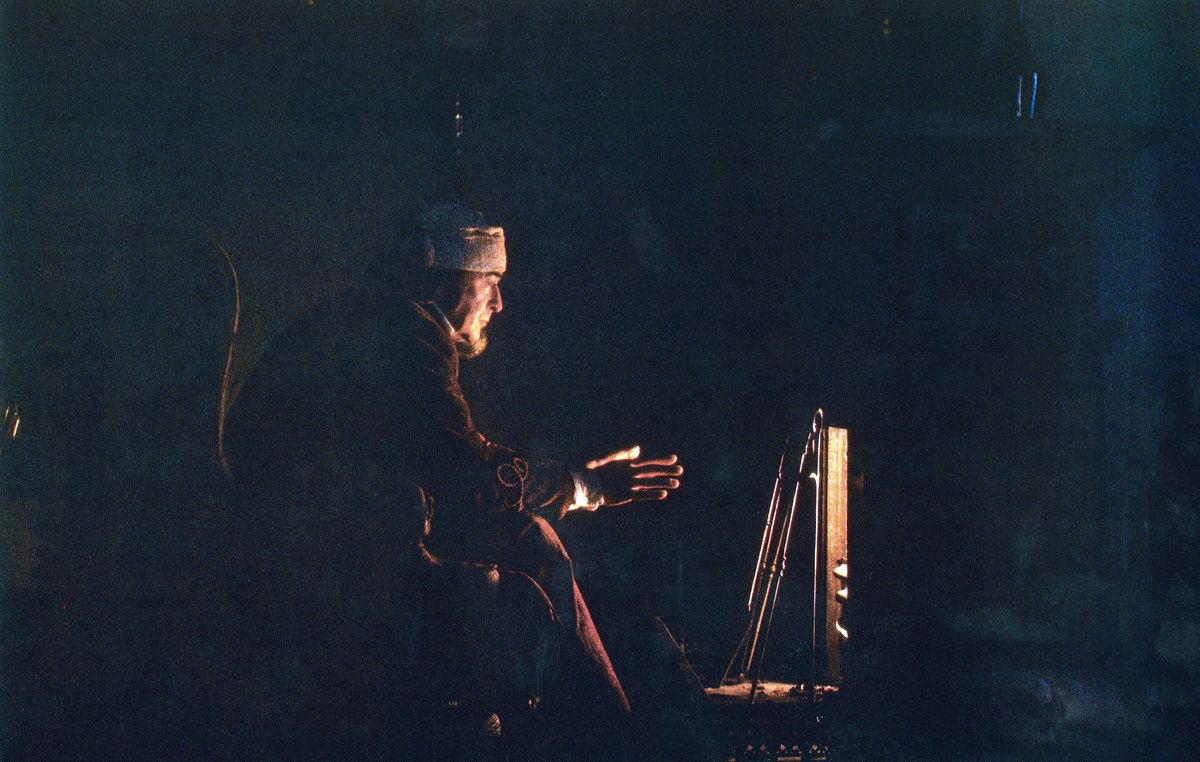
Why can’t The Walt Disney Company make the Muppets work? Like, really work? Why do we keep getting TV shows and specials that fail to find an audience? Sporadic nostalgia plays that never quite hit the mark?
These are funny questions to ask when the solution has been staring Disney in the face since before the company even acquired the Muppets characters in 2004. It’s a Disney-produced Muppet movie made after Jim Henson’s death, and it returns every year like clockwork, as the Muppets of the past hold up a complete template for how to revive the franchise.
We need to ask ourselves: Why haven’t we already made half a dozen more movies like The Muppet Christmas Carol?
What’s so hard about the Muppets anyway?

Photo: Buena Vista Pictures/Everett Collection
It’s worth saying that Disney’s not dumb, exactly, for not being able to figure out the Muppets. They’re simply a really weird concept, as filmmaking goes.
For one thing, puppetry both has a bunch of really specific demands and logistics, which is easy to miss, because the art form also involves hiding all those logistics. A Muppet production requires a set of performers, crafters, and staff that can handle all the typical needs of a soundstage production, plus bespoke costuming, and all of it is on a movable stage resting 4 feet off the ground. Not to mention the custom props, the trick camera work, and everything else that goes into, say, a talking frog playing a banjo on a log surrounded by water. The classic Muppet movies were a blockbuster special effects flick effort to make an all-ages musical resting on a brand that hasn’t ever really been a four-quadrant success.
Disney’s current strategy shows a pattern of taking the characters to smaller, frugal television productions — and intermittent ones at that. The classic Muppet films of the ’80s and ’90s were built on the collective talent of a close-knit group of screenwriters, songwriters, performers, and production crew that had already been producing TV puppeteering in the Muppet fashion for nearly a decade before tackling their first feature-length film.
So the first thing Disney needs to do is rebuild that talent pool, supporting the old guard while allowing fresh blood to get notches on their belts. It needs to give those folks consistent work, which means it needs to give them successful work. In order to get around what’s difficult about the Muppets, Disney needs to solve for what it finds most difficult: earnest and honest self-awareness.
The Disney brand is not built to make media that earnestly reflects on media — especially media that metatextually reflects on itself. The Disney Princesses can be on a lunchbox together, but god forbid they make eye contact. And the Muppets are nothing without metatextuality. Miss Piggy is a character, sure. But she’s also an actor who — in The Muppet Christmas Carol, for example — is playing the part of Mrs. Cratchit, when she’s not looking directly into the camera and mugging.

Photo: Walt Disney Co./Everett Collection
In fact, she’s actually a puppeteer pretending to be a talking pig who is pretending to be a character. The kayfabe of the Muppets even extends to interactions with press and news media — it’s one of the most entertaining things about them. And that’s a level of metatextuality that has suffered in the post-Disney-acquisition era.
The Muppets are known for making fun of the act of performing, but it must be emphasized that it’s in a knowing, loving, theater kid kind of way. Even all the way back to The Muppet Show, guest stars were invited to show off their little-known talents — like Christopher Reeve’s piano playing, or an Empire Strikes Back-era Mark Hamill’s comedy chops. Key to the Muppets is that they engage in a performance that’s about performance, with human artists in puppet drag, a cultural artifact whose best use is as a mirror to other cultural artifacts.
You can’t fake that kind of playfulness. The Walt Disney Company, grown so large that it can’t do anything without a whiff of capitalistic cynicism, certainly can’t. So it needs an easy recipe for mixing in some more earnestness and metatextuality to the modern Muppets formula.
Disney needs to make more Muppet adaptations of classic literature
This is such an obvious solution you may be tempted to stop reading this article right here. We’re all convinced already, which is why “What classic work of literature would you adapt with a cast of all Muppets and one to two humans” is the only thing about the Muppets that organically trends on social media, and it does it like twice a year.
But before you rush to the comments to cast your vote for Pride and Prejudice or The Lord of the Rings or whatever is your personal fave, wait a minute. This isn’t as foolproof of an idea as you might think. There are lesser Muppet literature adaptations. If you’ve seen them, you know; and if you haven’t heard of them, well, there’s a reason.
2005’s The Muppets’ Wizard of Oz is not worth revisiting. It’s a Very Merry Muppet Christmas Movie (essentially It’s a Wonderful Life with Kermit the Frog) is worth viewing, but only because it’s fascinatingly weird. And while Muppet Treasure Island is a great Muppet movie I’ll watch any time (“Shiver My Timbers” goes… so much harder than it needed to), I think we can all agree that it has not reached the same cultural presence as Christmas Carol.
But why? What does Christmas Carol have that the others don’t? Like most puppeteering tricks, it makes a few very specific, clever choices that only look casual and improvised. Repeat after me: The Muppet Christmas Carol is not a parody, it’s an adaptation. And it’s an adaptation of a work of popular fantasy.
These two choices — to make a heartfelt attempt to bring Dickens’ talents to the movie viewer, and to commit to the fantastical elements of the story as much as the emotional ones — don’t just produce a great Dickens adaptation. They also give Christmas Carol the room to deliver on the ultimate expression of Jim Henson’s vision.
(Nah, it’s all right) This is culture
The silliness of the Muppets does not prepare you to read Dickens’ Christmas Carol after seeing The Muppet Christmas Carol, at which point you will realize just how much of the movie’s dialogue is verbatim from the book. Muppet quips aside — “Hoity-toity, Mr. Godlike Smartypants,” etc. — it might be easier to point out which lines of dialogue in the film aren’t direct quotes from Dickens than the reverse.
And with Gonzo’s role as storyteller (brilliant “casting” for a wildcard character previously relegated to third fiddle or lower), Dickens’ descriptive prose also gets its full due. Cheekily, Gonzo’s insistence that he is the Charles Dickens only serves to emphasize the idea that somebody authored this story and he was a real person. It also provides a framework for Christmas Carol to constantly break the fourth wall, another fundamental hallmark of every truly great Muppet production.

Image: Walt Disney Co./Everett Collection
As a bona fide attempt to adapt The Christmas Carol, TMCC must also expand beyond the classic Muppet spectrum of comedy and pathos. It’s got to tackle emotional drama, fantastical sequences, and even horror. And TMCC knows exactly when its Muppet characters ought to step back, or even literally excuse themselves from the story. But not so that humans can take the stage alone, no. So that the physical effects studio of Jim Henson’s Creature Shop can come out to play.
When the idea of Muppet literary adaptations trends, it’s usually with plenty of suggestions about which Muppets should play which supporting characters. Which is ironic, because the most important supporting characters in The Muppet Christmas Carol — the “actors” who work with the legendary Michael Caine to present the story’s fundamental emotional pillar, the believable transformation of Western literature’s foremost asshole — aren’t Muppet characters at all.
The ghosts of Christmas Past, Present, and Yet to Come bring Dickens’ own descriptions to eerie and vivid life in a way that couldn’t have been done simply by putting a familiar puppet “performer” in the scene. Can you imagine resident Muppet giant Sweetums as the enormous ghost of Christmas Present? I hope not. They both deserve better.
Each of the ghosts is a moviemaking triumph of its own: Footage of the ghost of Christmas Past was filmed with the performer and puppet suspended in a vat of water before being composited into the final shots, to create the character’s spookily floating garments. Present builds on years of work with the articulated animatronic faces-plus-full-body costumes perfected in Dinosaurs and Fraggle Rock. Yet to Come’s simplicity of design belies the expert performance, writing, and staging that makes it as quietly terrifying as any of the shrieking Nazgul or CGI Dementors that would hit screens a decade later.
With the ghosts, Christmas Carol became exactly the kind of thing Jim Henson strove to focus on in the later days of his tragically truncated career, in films like Labyrinth and The Dark Crystal — proof that puppets could be a filmmaking medium, not just a vehicle for kids fare or comedy. That serious, fantastical, and unflinchingly puppet-forward films could be made by prizing verisimilitude rather than realism in their visuals. Seeking to seem real, worrying less about looking real.
All of this together makes Christmas Carol a fundamentally celebratory film. It retains the earnest, unblinking enthusiasm that classic Muppet productions had for performance and storytelling. It is Muppets as a platform for Dickens, not Dickens as a platform for Muppets. The Muppets not as a story, or even a genre — the Muppets as a medium.

Image: Buena Vista Pictures/Everett Collection
It embodies the other side of the Muppets’ metatextual coin; the puppet troupe holds up not only a funhouse mirror to pop culture, but celebrates what it takes to make art at the same time. The lovers, the dreamers, and you. When Rizzo says “Isn’t this a little scary?” and Gonzo says “Nah, it’s all right, this is culture,” the sincerity of the sentiment rings off his little foam face. Culture — popular culture, disposable culture, workaday art, as Dickens’ work so emphatically was in his own time — is the end in and of itself. Not a parody of Dickens’ world, despite the puppet humor, but a committed realization of it.
Inspirational, celebrational, Muppetational
It’s this sincerity that allows The Muppet Christmas Carol to stand proudly on its little felted feet next to Golden Age of Hollywood greats and modern masters. You can’t talk about Dickens’ The Christmas Carol in adaptation without talking about the Muppets — which is wonderful! But it must be stressed that it’s also absurd. Bob Cratchit is played by a fictional talking frog, and he’s mourning his lost child, and you’re crying. This is the full breadth of puppetry as an art form, and it’s exactly what Jim Henson wanted.
The commitment to fantasy is what separates Carol from later Muppet efforts like Very Merry Muppet Christmas (no human drama), Wizard of Oz (true parody), and even Treasure Island (no supernatural world-building). And if that’s true, maybe we should be reconsidering some of the forgotten old Muppet classics, like Jim Henson’s The Storyteller, or The Frog Prince, or The Muppet Musicians of Bremen.
So, which classic stories would make for the best Muppet movie adaptations?
Room for humor, a happy ending to be earnestly sentimental about, and fantastical elements to push the range of puppetry. As much as I want to advocate for my own favorite, The Count of Monte Cristo, Jason Segel may have been right — maybe we do need to make a Muppet Dracula. A Muppet Midsummer Night’s Dream. A Muppet Phantom of the Opera.
If Disney can make enough of them, the studio can rebuild the kind of group of experienced performers, writers, musicians, and craftspeople that made the Muppets such a weird little indelible force to begin with. And when the classic literature training wheels are ready to come off? Then it’ll really be time to play the music and light the lights.
